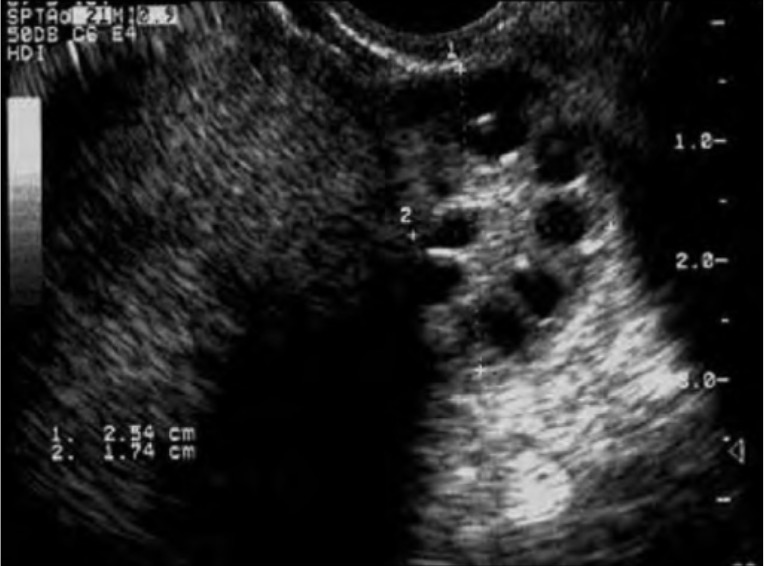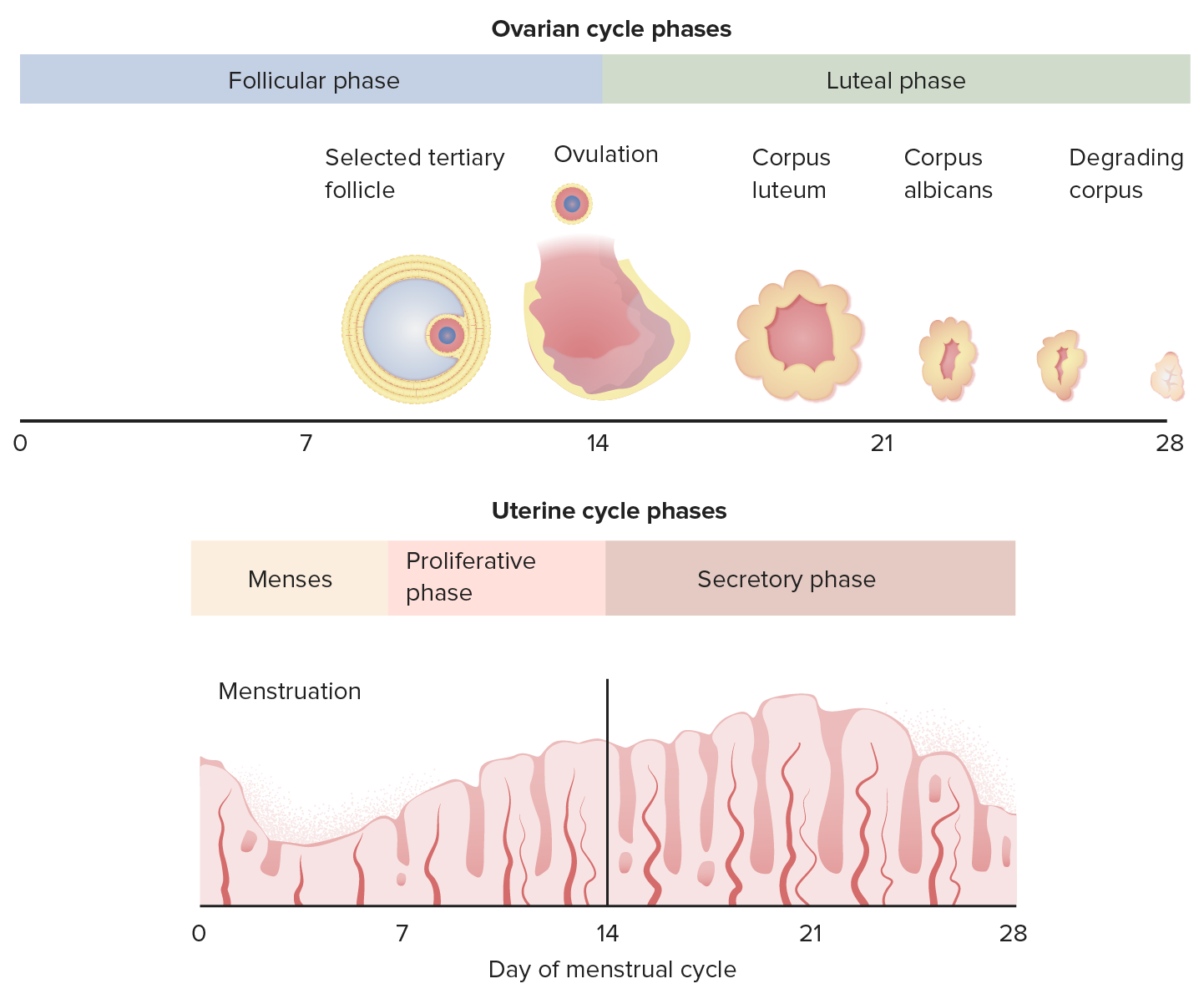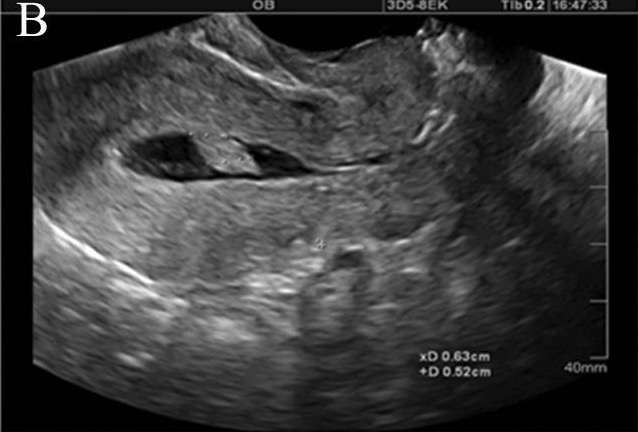Playlist
Show Playlist
Hide Playlist
Anovulatory Cycle
-
Slides Uterus Female Repro.pdf
-
Reference List Pathology.pdf
-
Download Lecture Overview
00:01 Anovulatory cycle. 00:04 Excess estrogen. 00:06 Don’t know what that does to the endometrium? It thickens it, thickens it, thickens it. 00:11 Hence, we call the first phase of your menstrual cycle, the follicular phase or a.k.a. proliferative phase. 00:20 Next, after your – Let’s say, if ovulation was to take place progesterone comes into play and the spiral arteries are then kept patent by progesterone. 00:30 Read that first sentence. 00:31 It’d explain everything that I just said. 00:33 The pathophysiology is in the underlined statement. 00:39 Anovulatory cycle causing dysfunctional uterine bleeding. 00:44 You have excessive estrogen stimulation without development of the progesterone. 00:50 Failure of ovulation, anovulatory, but you’ll have – or the female, unfortunately, is going to experience what? Dysfunctional uterine bleeding. 00:58 Next, Usually due to subtle hormonal imbalances during menarche or perimenopausal period, the bottomline is this: Anovulatory cycle, if your patient is suffering from dysfunctional uterine bleeding, you’re having or she’s experiencing hormone imbalance between estrogen and progesterone. 01:20 At least know that much before taking your boards for anovulatory cycle. 01:25 Is it common? Extremely. 01:30 Differential diagnoses: Rarely may result from endocrine disorders, but still nonetheless, know it. 01:37 If your patient has thyroid disease, adrenal disease or pituitary tumors, isn’t this messing up your hormones? Take a look at these. All of these are hormonal pathologies. 01:49 And so therefore, it could bring about anovulatory cycles. 01:55 Other causes, these are ovarian lesions. 02:00 What if you have a functioning ovarian tumor and here, a particular one that I need you to keep in mind is something called a granulosa-theca cell tumor. 02:09 A granulosa-theca cell tumor, we’ll talk about that in greater detail. 02:13 We’ll also refer to something called Meigs syndrome. 02:15 This is a functioning ovarian tumor. 02:18 The ovary's functioning, but then it’s causing anovulatory cycle along with dysfunctional uterine bleeding. 02:26 Or you could have polycystic ovaries. 02:28 So meaning to say that at some point, when we talk about polycystic ovarian syndrome, there’s every possibility that there might be multiple, multiple, multiple cysts in the ovary. 02:37 Tell me, please. Are you going to have proper ovulation? No, you do not. 02:42 Could you have bleeding? Sure. 02:45 But it might be dysfunctional. 02:48 Generalized metabolic disturbances resulting in anovulation. 02:52 Oftentimes, obese females will complain or or will express infertility. 03:00 Malnutrition and chronic systemic diseases all may result in anovulation. 03:06 Important list of differential diagnoses, rare. 03:10 Most of the time, it will be hormonal imbalance. 03:13 However, I’ll walk you through a couple of categories as well.
About the Lecture
The lecture Anovulatory Cycle by Carlo Raj, MD is from the course Uterine and Fallopian Tube Disease.
Included Quiz Questions
Which of the following is the BEST description of the hormonal imbalance behind anovulatory cycles?
- Proliferation of endometrium is driven by estrogen, but because progesterone is absent due to failure of ovulation, the endometrium sheds when it can no longer be supported by the low blood supply.
- Lack of ovulation causes deficiency of estrogen and progesterone, leading to the shedding of endometrium at irregular intervals.
- Failure of the hypothalamus leads to absence of FSH and LH in the bloodstream. The uterine blood vessels become obliterated. Thus, there is little to no menstrual bleeding.
- Inadequate testosterone production by ovarian cells leads to excessive menstrual bleeding due to lack of estrogen counteraction.
- Anovulation leads to excessive stimulation of the pituitary by ovarian hormones, which increases FSH production, leading to early menopause.
Which of the following disorders can cause anovulatory cycles?
- All three conditions listed
- None of the three conditions listed
- Hypothyroidism
- Cushing syndrome
- Sheehan syndrome
Which of the following is the MOST probable cause of dysfunctional uterine bleeding in an obese 25-year-old female?
- Polycystic ovaries
- Sheehan syndrome
- Pituitary adenoma
- Breast cancer
- Hyperthyroidism
Which of the following cells within the ovary can cause a hormonal imbalance that presents as anovulatory cycles?
- Granulosa-theca cells
- Fibroblasts
- Epithelial covering cells
- Germ cells
- Smooth muscle cells
Customer reviews
5,0 of 5 stars
| 5 Stars |
|
5 |
| 4 Stars |
|
0 |
| 3 Stars |
|
0 |
| 2 Stars |
|
0 |
| 1 Star |
|
0 |






